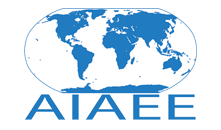Keywords
agricultural development; gender equality; Thailand; women empowerment
Abstract
Previous research has demonstrated that empowering women in developing nations has been shownto enhanceagricultural productivity and rural development. Although women in Southeast Asia are often consideredto be more empowered than in other parts of the world, in Thailand, women still experience persistent barriers to gender equality. In response, this case study examinedthe positionality of women in Thailand’s agricultural sector by describingtheirunderlying beliefs and valuesregarding their careers. As a result, three distinct themes emerged: (1) dichotomous gender roles, (2) the perpetuation of gender stereotypes, and (3) positive perceptions and beliefs ingender equality and women’s abilities. The findings illuminated that despite having a distinctly positive perception of themselves and their abilities, women internalize prescribedgender stereotypes in the agricultural industryin Thailand. Such views appeared to impede the participants’ sense ofempowermentin the agricultural workforce. Moving forward, we recommend that extension professionalsdesign programmingto empower women in Thailand by tailoring professional development opportunitiesbased on regional differences in regard to gendered customs, norms,and traditions. Further,additional researchshould be conducted to distill the specific topic areas that could be used to stir critical reflection and action among women in Thailand’s agricultural sector.
Rights Statements
This Item is protected by copyright and/or related rights. You are free to use this Item in any way that is permitted by the copyright and related rights legislation that applies to your use. For other uses you need to obtain permission from the rights-holder(s).
Recommended Citation
Richardson, M. A.,
&
Roberts, R.
(2020).
Modern Women and Traditional Gender Stereotypes: An Examination of the Roles Women Assume in Thailand’s Agricultural System.
Journal of International Agricultural and Extension Education, 27(4), 7-21.
DOI: https://doi.org/10.5191/jiaee.2020.27407



